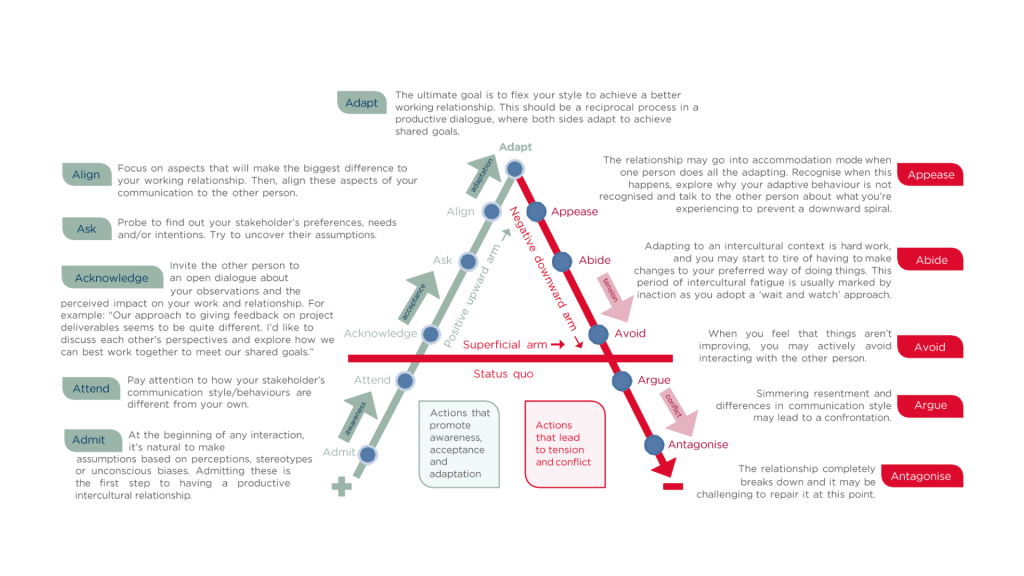
Positive influencing skills: A quick guide
Positive influencing is a vital skill in today’s workplace, helping you achieve your goals while building strong, trusting relationships. But how do you put it into practice?

In today’s global work environment, working effectively with people from different cultural backgrounds is essential. Here are some practical tips that can help you collaborate more successfully with colleagues from diverse backgrounds.
Culture isn’t just about traditions or rituals—it’s also about the values, beliefs, and practices that shape who we are. Our cultural identity is influenced by the groups we belong to: family, profession, gender, geography, and more. These influences affect how we behave, how we communicate, and even how we perceive others.
Culture is both visible and invisible. The visible part includes things like language, body language, customs, and traditions. The invisible part includes our attitudes, beliefs, and assumptions—things we may not even be aware of. Understanding both aspects of culture is key to navigating intercultural interactions effectively.

One powerful tool to approach intercultural communication is the A-Frame model. This model shows how an intercultural relationship can evolve, depending on how we approach it. The A-Frame has two main pathways: one that leads to positive, productive relationships, and one that can cause tension and conflict.
1. Admit: Start by acknowledging that we all have biases and assumptions, whether we realize it or not. Recognizing this is the first step toward better understanding.
2. Attend: Pay attention to how the other person communicates. Their style might be different from yours, and that’s okay—it’s part of the process of learning.
3. Acknowledge: Open up a conversation about your differences. For example, you could say, “I’ve noticed that we approach feedback differently. Let’s talk about how we can work together more effectively.”
4. Ask: Ask questions to better understand the other person’s needs, preferences, and expectations. This helps avoid misunderstandings and strengthens the relationship.
5. Align: Find common ground. Focus on the areas where aligning your communication will make the biggest difference in your working relationship.
6. Adapt: Flexibility is key. The goal is to adjust your style to meet the other person halfway. This should be a two-way street, where both parties try to adapt.
1. Appease: Be careful not to let one person do all the adapting. If that happens, it can create an imbalance in the relationship.
2. Abide: Intercultural communication can be exhausting. If you start to feel tired or frustrated, it might lead to a “wait and see” attitude, where you stop trying to improve the relationship.
3. Avoid: If things aren’t improving, you might start avoiding the person altogether. This can make the problem worse.
4. Argue: Differences in communication styles can lead to conflict, especially if resentment builds up over time.
5. Antagonise: In the worst-case scenario, the relationship can break down completely, and it may be difficult to repair.
Building strong intercultural relationships takes effort, but it’s worth it. By recognising our own biases, understanding the other person’s needs, and adapting our communication styles, we can create more positive, productive working relationships. The A-Frame model is a great guide to help you navigate these interactions and avoid common pitfalls.

Positive influencing is a vital skill in today’s workplace, helping you achieve your goals while building strong, trusting relationships. But how do you put it into practice?

Chevening Scholars have a long history of shaping the world through their professional achievements. However, leadership doesn’t stop when you close your laptop at the end of a workday.

The ability to successfully communicate across cultures is a key skill for any Chevening Alumnus in today's globalised world. The Chevening Alumni team have curated 5 free courses to help boost your skills in intercultural communication.